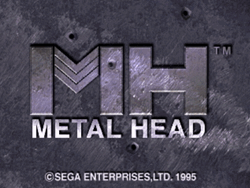 It’s rare that a videogame so perfectly encapsulates everything about its era of origin.
It’s rare that a videogame so perfectly encapsulates everything about its era of origin.
Many people reading this blog “grew up” with videogames (hi, target audience!). But, for anyone that missed that nonsense, let me give you a rundown: it was terrible. No, wait, it was pretty great playing videogames as a kid, and watching as the graphics and gameplay grew up with our own highly sophisticated tastes (Final Fantasy Tactics is the height of literature, obviously). But one unfortunate side effect of being impressionable children that just happened to want to see Mario conquer a turtle was that we were inevitably exposed to every speck of videogame advertising under the sun. If you wanted to know the latest tips, straight from the pros, you had to also learn that Nintendo is releasing a new line of multicolored Gameboys, the Sega Genesis does what Nintendon’t, and the Sega Game Gear isn’t nearly as bad as your neighbor claims. The sheer volume of videogame advertising seemed dramatically more intensive than it is even today… but that was mainly because, if you were a certain kind of gamer, they might be literally the only advertisements for anything you would ever see.
And, as impressionable children, we were suckers for every damn ad.
Blast Processing might not have actually been a thing, but we all knew that was the only thing that could get that hedgehog going. An experience like Yoshi’s Island could never appear on the ailing Genesis, because it couldn’t produce enough colors. And the gorgeous symphony of Final Fantasy 3? That midi was all Super Nintendo, baby. Nintendo Power probably gave a solid 2-4 page spread a month over to proving all the ways that the Sega Genesis was the inferior product, and Sega Visions was little more than a propaganda rag that maybe remembered to mention Toejam & Earl once a year. As every child was conscripted into the console wars, we all were granted our proper indoctrination.
 But the magazines tended to err on the side of “technical”, which was only natural, as that complete rundown on why Blast Processing was a scam was likely written by a fiercely pedantic nerd. That may have technically been advertising, but it wasn’t advertising. That wasn’t a page of a magazine telling you that the latest game was good because it smelled better than chili dog farts. That wasn’t an ad inviting you to some bizarre sex dungeon because you decided to purchase the latest fighting game. And that wasn’t Play it Loud.
But the magazines tended to err on the side of “technical”, which was only natural, as that complete rundown on why Blast Processing was a scam was likely written by a fiercely pedantic nerd. That may have technically been advertising, but it wasn’t advertising. That wasn’t a page of a magazine telling you that the latest game was good because it smelled better than chili dog farts. That wasn’t an ad inviting you to some bizarre sex dungeon because you decided to purchase the latest fighting game. And that wasn’t Play it Loud.
Let’s talk about Play it Loud.
Play it Loud was a reactionary advertising campaign enacted by Nintendo of America. Basically, Sega was eating Nintendo’s console lunch, and it was determined that this was the direct result of Sonic the Hedgehog and the Sega Genesis oeuvre appearing to be more mature than anything offered on Nintendo systems. And “mature” in this case was a very loose definition of the word, as it was more or less a desperate grab for Nintendo to hold on to that kiddy demographic that was now growing into a pre-teen demographic. Thus, like Sonic the Hedgehog, everything had to have attitude. A chubby Italian guy wasn’t going to cut it, and every last Nintendo mascot needed to bear their shiny white fangs. Thus, the Play it Loud campaign did its level best to portray the Super Nintendo and Gameboy releases of the day as loud, attitude-enriched experiences featuring mature, cynical, and downright violent protagonists.
And here are some games advertised under the Play it Loud banner:
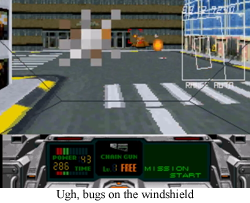 Donkey Kong Country
Donkey Kong Country- Illusion of Gaia
- Super Mario World
- Uniracers
- Space Invaders (Gameboy)
- Donkey Kong ‘94
- Tetris 2
- Kirby Superstar
- Kirby’s Avalanche
- Kirby’s Dream Course
Yes, it doesn’t get any more “loud” than fantasy miniature golf with a pink ball baby!
But advertising campaigns are ephemeral, and now, a couple of decades later, barely anyone remembers that Tetris 2 was apparently supposed to be hardcore. While NOA may have been trying to appeal to teens with at least one ad that seemed to be based on nose picking being cool (look it up!), the actual games advertised didn’t contain a sniff of their attached advertising. So, if a neophyte player were to sit down with Kirby’s Avalanche today, they’d have no idea it was once supposed to be Played Loud.
But Metal Head? Metal Head is 90s Sega all the way.
Released upon the 32X in February of ’95, Metal Head starts with a random voice shouting, “Sega!” Then it proceeds to tell the story of a future where all nations have become one, but, I dunno, I guess there are some jerks that are against that, and they’ve got tanks. But we can do ‘em one better, because we’ve got GIANT FIGHTING ROBOTS. So, player, it is your turn to strap yourself into a mech, skulk around the city, and blast anything that moves (or, sometimes, doesn’t move. You will be rewarded for destroying parked cars). And, since this is a 32X game, it’s sharp polygons all the way down, and maybe this game is the entire reason we never saw playable walkers in Star Fox until 2016.
And everything about the game is 1995 Sega as heck.
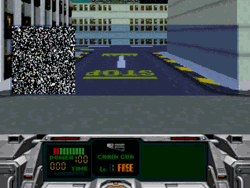 A real world setting that is just as “real world” as a Saturday morning cartoon? Check. Impressive graphics that aren’t all that great at actually allowing you to see your objectives? Check. Incredibly stilted voice acting? Check. Anime as hell concept, but with Western soldiers and themes? Double check. And the whole thing being touted as some kind of revolutionary title, despite the fact that it’s just a reskinned, lousy version of Doom? That’s a super check. Throw in a blood code, and this title would be the wet dream of the 1995 Sega of America advertising department.
A real world setting that is just as “real world” as a Saturday morning cartoon? Check. Impressive graphics that aren’t all that great at actually allowing you to see your objectives? Check. Incredibly stilted voice acting? Check. Anime as hell concept, but with Western soldiers and themes? Double check. And the whole thing being touted as some kind of revolutionary title, despite the fact that it’s just a reskinned, lousy version of Doom? That’s a super check. Throw in a blood code, and this title would be the wet dream of the 1995 Sega of America advertising department.
It’s also, ya know, not very good. And, what’s more, it was identified as terrible even at the time of its release. Electronic Gaming Monthly gave it a 4.75 out of 10. That probably means something!
But, despite being a complete turd of a game from start to finish (and, trust me, you’re finished after the first stage, as you’ve seen everything this game has to offer), Metal Head should always be remembered as one of the few games that perfectly captured the shouting, futuristic Sega of the mid 90’s. This was the Sega that would force another company to hoist angry eyes onto a pink creampuff, and that should never be forgotten.
The console wars had many casualties, so let this Metal Head stand as a memorial.
FGC #402 Metal Head
- System: Sega 32X. I always have a hard time acknowledging the 32X as its own system, because, come on, Nintendo Power told me it’s no different than a Super FX chip.
- Number of players: So this game advertises two players on the box, but Sega offered an official apology that claimed there just happened to be a misprint that implied the game would be better. One player, whoopsidaisy.
- Just play the gig, man: Okay, one feature in this game that should be repeated in every game ever is that it has a sound test, but the sound test actually displays an onscreen keyboard to show you how to play along.
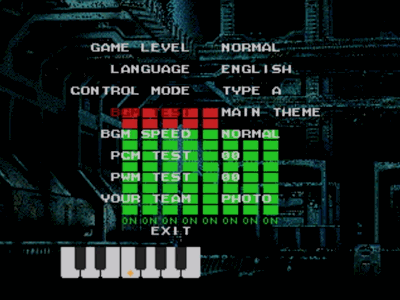
None of the music is good enough to really warrant such a feature, but, man, I would have killed for such a thing in Final Fantasy 6 back in the day.
- Favorite Weapon: None of the weapons seem all that different from each other, so I’ll just go with the chain gun. It is theoretically weak, but I was able to take down a tank with it in no time at all, so it seems to do a good job.
- Did you know? With a secret code, you can make this anime as hell game anime as hell.
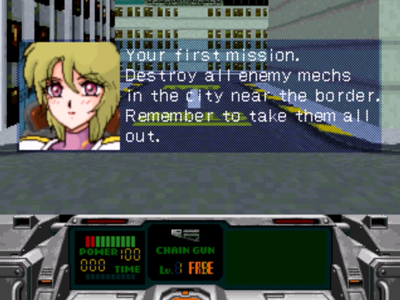
Metal Head Crisis!
- Would I play again: Nope! You don’t justify the 32X at all, Metal Head. Maybe I’ll just play Turtles in Time instead.
What’s next? Random ROB has chosen… Contra 3: The Alien Wars! Now there’s a game that can play it loud! Please look forward to it!
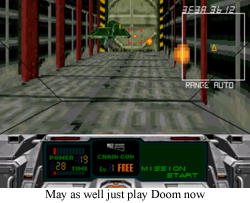
I have to wonder exactly who thought that Politician Having a Stroke was good portrait material.